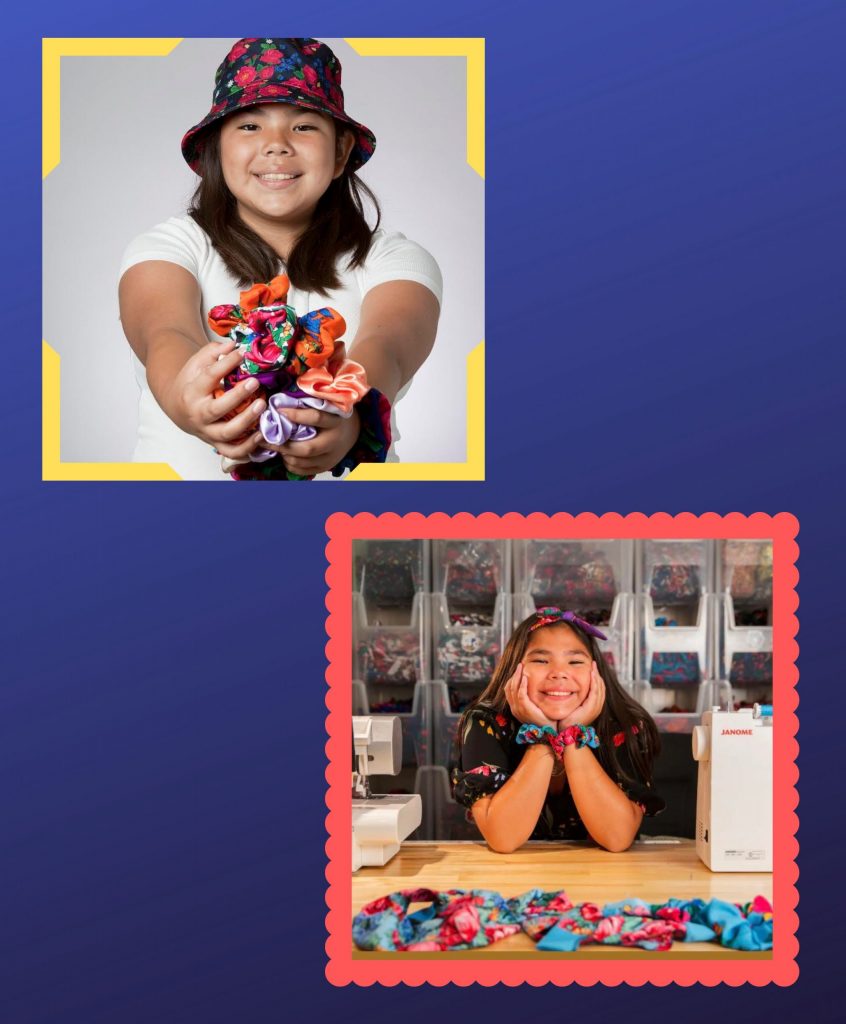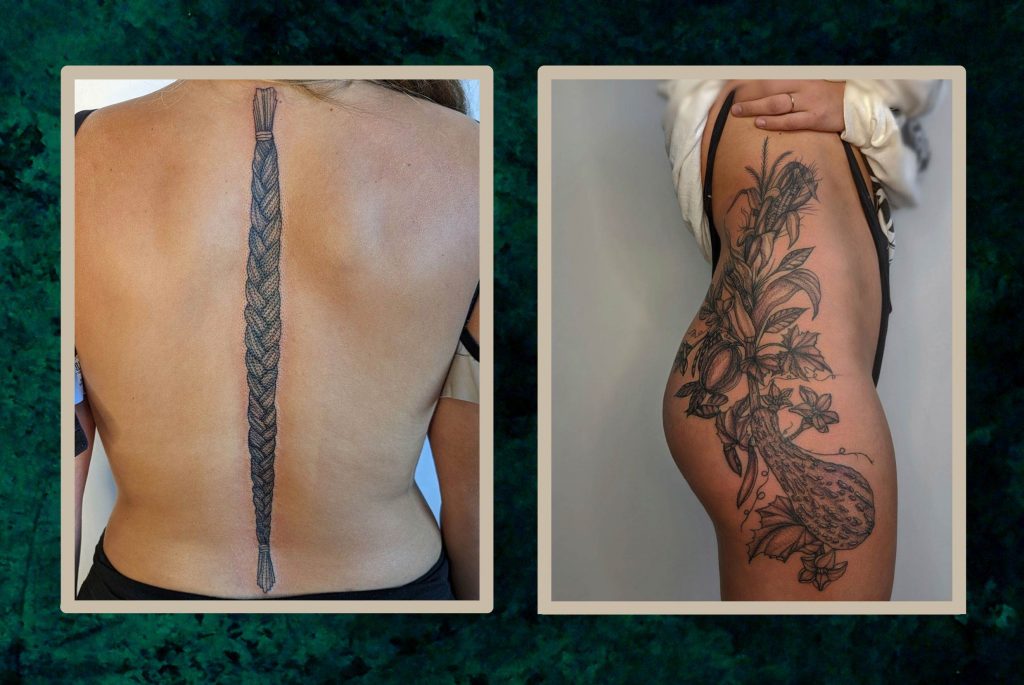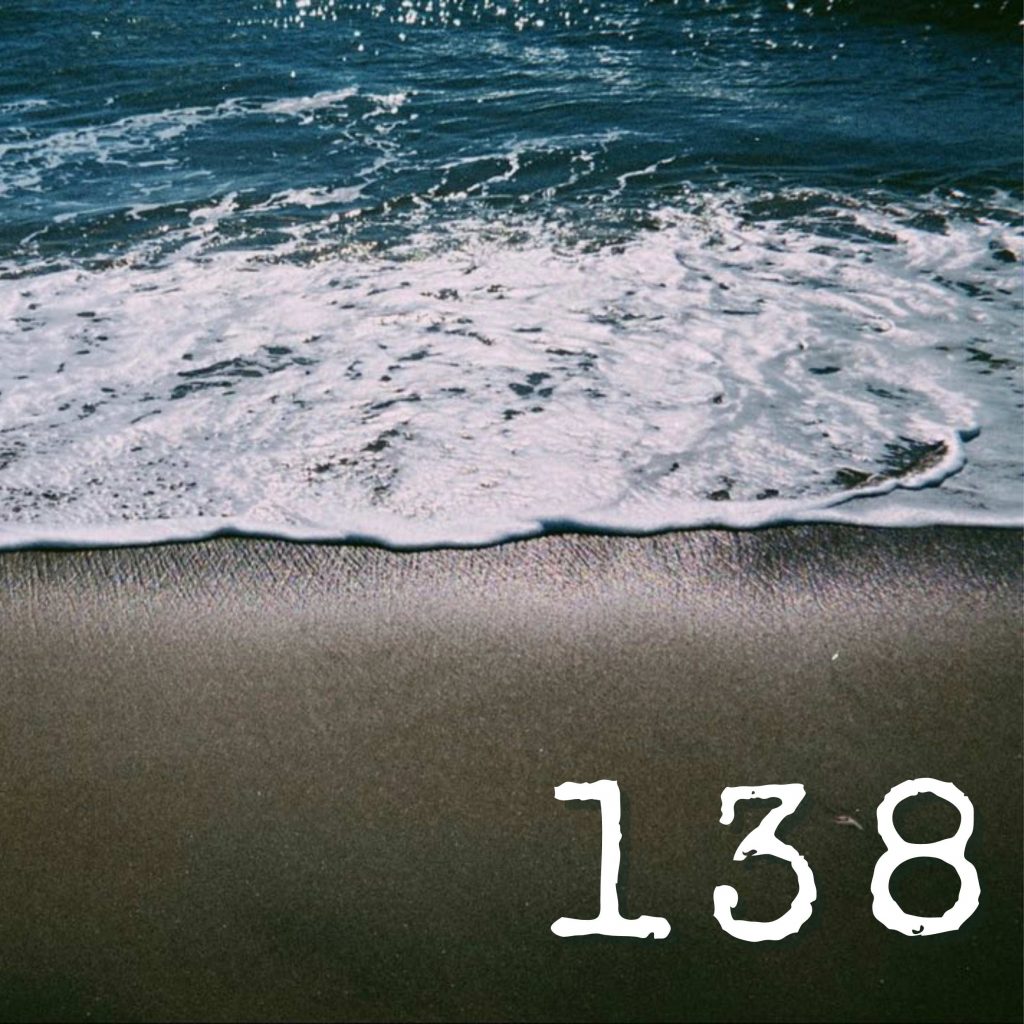The December Issue 2022 Indigenous Power: Past, Present & Future
Indigenous Power: Past, Present & Future has been brought together by Métis author, educator and changemaker Willie Poll, who has been working with Font over the past few months on outreach and relationship building with Indigenous writers and artists across Quebec. Willie has done a wonderful job in connecting with Indigenous writers across generations, Nations, and disciplines in the province, and bringing them together to reflect on power for Indigenous peoples across Turtle Island: how it has been removed, how it has been regained, and how it endures.
Read for yourselves, in the words of 12-year-old Algonquin Mya Beaudry (Kitigan Zibi Anishinabeg), founder of Kokom Scrunchies; Afro-Native rapper Joseph Sarenhes (Wendake); Wendat tattoo artist Terry Dactel (Tio’tià:ke); Mi’gmaq writer Maggie Vicaire (Listuguj); Innu-Atikamekw artist Johnny Boivin (Tio’tià:ke); Bear Clan Kanienke:haka Taiorenhote Dan David (Kanehsatà:ke), and in Willie’s recording of Warrior Women’s Song.
Issue 14 is also our final Issue of Font in 2022, and the end of this particular iteration of the magazine as we await funding news for next year. In the meantime, we’re partnering with the Quebec Writers Federation for a special Issue in February 2023, with an open call for submissions for QWF Members. Watch this space…
Our thanks to the Zeller Family Foundation and QWF in making Willie’s appointment possible. And go buy a Kokom Scrunchie!
Indigenous Power: Past, Present & Future
Women’s Warrior Song sung by Willie Poll
Indigenous power shows itself in all kinds of ways; connected through past, present, and future. In many ways, existing in your Indigeneity and authentic self is a moment, a feeling, a reclaiming of power. A few weeks ago I stood in front of an auditorium and I sang the Women’s Warrior Song. I began afraid and shivering with nerves; I felt alone. From the moment I sang the first words, a feeling of power overcame me and oozed from me. I imagined that feeling of power washing over every peering eye and listening ear like a warm ray from the sun. I wasn’t alone. I called the matriarchs into that moment and it was pure power. I had never felt such an immovable force before but it was radiating from within me. It rushed through me the way water carves out a river. I was a vessel for power.
We were powerful. We are powerful. And we will always be powerful.
To exist in a society that once tried to seize us, remove us, and colonize us; they saw our power, they feared our power. They tried to control our power. Little did they know that even without our ceremonies, even without our language, and even without our homes, they could not take away our power. It lives within us. Our power is a blood memory of a rich traditional economy where our communities grew in strength, not as individuals but as our collective. Our power is a blood memory of our languages that flow through us even when the words do not. Our power is a blood memory of our songs; our drum beat is the heartbeat that we hear from growth in the womb, and it stays with us as we venture earth side and connects us to the spirit world beyond.
Within this Font issue, we show Indigenous power in ways of traditional gender identity, connection to our ancestral lands, strengthening Indigenous economy, and reclaiming identity through art. We call in all our relations earth side and spirit world side to celebrate our history, our present, and our future. We bring in intergenerational voices; some who have felt and honed their power, who stand comfortably in it. Some who are learning to embrace it and beginning to fill spaces and be loud. Others who are breaking cycles of trauma and reclaiming a power that is rightfully ours. Some, like myself, who have moments of power but do not live comfortably in those moments yet. With colonization there are moments of imposter syndrome, moments of disconnect, moments of grief. These moments do not take away from our power; we are not statues to be chipped away at by the tools of colonization, no, we are the land, the waters, and the power of Turtle Island.
In this moment we will stand in our power. We will dance in our power. We will sing in our power. We will fill spaces with our power. We will be loud in our power.
Kokom Scrunchies with Mya Beaudry
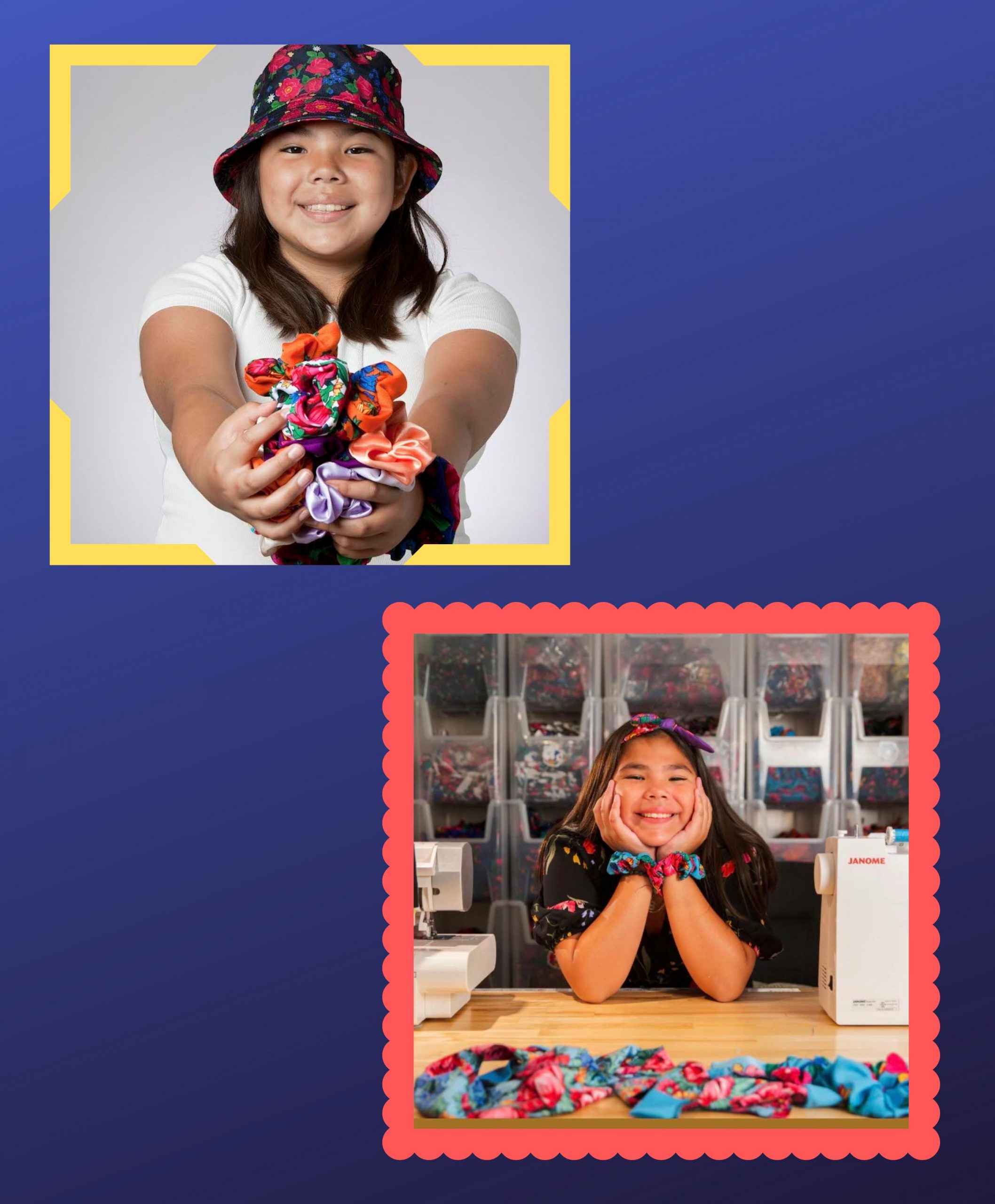

Font guest editor Willie Poll interviews Kokom Scrunchies founder, Mya Beaudry.
*
How about we start by telling us a little about you?
Hi I’m Mya Beaudry, I’m twelve years old, and I’m an Algonquin from Kitigan Zibi. I am the founder of Kokom Scrunchies and I love playing hockey and eating chicken nuggets. During the summer, I spend my weekends going to as many pow wows as I can, I dance women’s traditional.
How did you get the idea for Kokom Scrunchies and how did it begin?
I started Kokom Scrunchies in 2019 as a way to give back to the youth in my pow wow community. It originally wasn’t a business but more of a way to fundraise for the pow wow giveaway I was hosting. It wasn’t until March 2020 when we turned it into a business using Shopify.
Because of the pandemic, I had to wait to host my special, but I when I did get to host it, it was in my home community, Kitigan Zibi. It was the best day, I had all my community there, my family, and I was able to give back to my pow wow circle.
As an Indigenous youth who highlights other strong matriarchs, I’d love to know what the floral pattern on the scrunchies means to you and how your work has uplifted and supported Indigenous women?
To me, the floral pattern represents my culture, and I’m very proud that I’m able to make scrunchies with it. It was important for me to make something that can be used by everyone young and old.
My very first scrunchies, I named them after role models in life. These are women in my family who I look up to; my role models. Kokom Scrunchies has honoured many Indigenous women, by sharing their amazing stories and also naming scrunchies after them.
When other Indigenous peoples see me as a young entrepreneur, I hope to inspire others to do what they love. My goal is to inspire other youth, which is why I work with this school called Connected North, and I give virtual workshops on how to make scrunchies.
Indigenous people have always had a strong economy, and I see businesses like this as part of our way to reclaim our traditional economy; what is one piece of business advice you would give to other Indigenous youth?
My best piece of advice is don’t be shy, set goals, sell or do something you love and have a support team. The other part is start small – don’t try to go too big too fast. I started out making five or seven scrunchies a week and slowly started making more as time went on.
For someone so young this is a huge accomplishment! I understand you just started a scrunchie vending machine, how did that idea and project happen?
The vending machine project happened because I wanted to have a store, but it takes too much money and time. So the next best thing is the vending machine, it’s basically our own little store which is inside my favourite shopping mall—Bayshore Shopping Centre—which is located in Ottawa, Ontario. I get to restock the Kokom Scrunchies vending machine a few times a week, and this week they had pictures up of me in mini-billboards in the mall. I was so surprised.
This issue is all about Indigenous power, and as an Indigenous youth you are SO powerful. How does Indigenous fashion help others reclaim their power?
Wearing a type of material that represents our culture empowers all Indigenous peoples. It shows that we as Indigenous people are also able to be part of the fashion world. I love to wear clothing and jewelry made by other Indigenous designers. Supporting one another is important.
What is in store for your future?
My goal is to continue growing Kokom Scrunchies with my family and team. To continue getting my scrunchies in stores all across the country. Starting in the new year I will be releasing a Kokom apparel line. It has always been my dream to design a clothing line. Stay tuned to Kokom Scrunchies’s social media for the release date!
STAND UP
Font guest editor Willie Poll interviewed Afro-Native musician Joseph Sarenhes. Follow Joseph on Youtube, Facebook and Instagram.
*
Aanii and thank you for chatting with us here at Font magazine! Let’s start by telling us a little about you!
My name is Joseph Sarenhes! I’m a young Afro-Native rapper, musician, and composer from Wendake | Bear clan | Yänionnyen, Quebec City. My artistic journey started the day I came to this world. Being the son of an African dancer and musician allowed me to be raised alongside West African culture and its rhythms. It gave me a strong foundation in terms of musical technique. It’s only later that I started to express myself on the piano and the guitar. So, it’s only natural that my music style has very strong cultural roots. In the Wendat language, my last name “Sarenhes” means “The tree with the highest crown.” I proudly decided to reclaim this name, which had been taken from my native ancestors during evangelization. I’m really just a kid who wants to show the world how beautiful and powerful my origins are.
Your music is so powerful. What is some advice you would give to other young artists trying to reclaim their power?
I’d tell them that the most important thing is that, no matter the circumstance, you have to stay authentic. The music production world always tests our authenticity and it is our duty to always be ourselves. This is even more important since we have a responsibility as the Indigenous youth. We’re in the era of misinformation and misrepresentation. We must ensure, more than ever, that our art will not be used to perpetuate the caricature of our people. Moreover, I often express to my fellow kin artists that it is time we begin to define ourselves as more than “Native artists.” Above all we are artists. We naturally choose to share our culture and our message through our creations, but that’s not what makes us artists. It’s rather the emotion with which we create. Our ancestors and our parents fought for the preservation of our people, and they bequeathed this fight to us, but I also think that we are the generation that will overcome this fight and become bigger than our oppression.
What are some of the key issues your music speaks to, and how can music help educate the world about Indigenous issues?
Each of my songs has its own message. Regarding the Native cause, it’s a message of pride that I share. We can summarize this message: we must never forget where we come from because it is the strength of our ancestors that allows us to fight for the preservation of our culture and to offer our children a dignified life. I believe that music is an interesting medium especially for artists who mix Indigenous culture with modern aspects. It makes our message much more accessible, which in turn informs and reaches many more people.
What does your ideal future look like for Indigenous people on Turtle Island?
I always imagined a world where our people could live in harmony with their neighbours by focusing on maintaining and practicing the traditions, without constantly having to fight. Several communities are in disastrous states, and our great nation will never be at peace while our brothers and sisters are in need. I am aware that my speech seems utopian but I strongly believe that one day, we will live in a world where the Native Indigenous nations will have healed their wounds and thus will finally be able to shine with all their brilliance.
‘Tattooing represents you. It’s a ceremony in and of itself.’


Terry Dactel and Lindsey Phylo are the co-founders of Hawthorn Studio.
*
“Kwe aweti’ ! Terry yiatsih , Wendat endi’.
Hello everyone, my name is Terry, and I am Wendat!
When it comes to being Indigenous and working within the modern tattoo industry, I can only speak about my experience and the knowledge I’ve gathered. I am not the voice for tattooing while Indigenous and I think it’s important to remember that.
I’ve always wanted to tattoo. Since I was younger. Before that I fell in love with dinosaurs, Jurassic Park, and paleontology. Turns out you have to be really good at math and biology for that, which I am definitely not. So I decided I would be happy living a life where I could draw dinosaurs instead. Since I can remember, though, I’ve always told everyone I wanted to tattoo. I set my sights on this goal and my tunnel vision was immovable. Funny enough, though, it was a split screen view. Because navigating the modern tattoo world and what I wanted to do and how I wanted to navigate incorporating my knowledge about tattooing from an Indigenous perspective were separate journeys that came together later.
I learned quickly that a lot of Indigenous folks have this reputation to only do hand poke tattooing within the industry. That we don’t do anything but that, and there weren’t many artists for me to look up to, even though tattooing is innately Black and Indigenous. The industry has always been good about making marginalized identities feel like they don’t belong. I wanted to do hand poke, I wanted to do machine. I wanted to mix designs and tell stories in my own way and bring them together. So through connecting with so many rad Indigenous folks from all corners of the world I got to learn that there is a space for me and for all of us just like I envisioned.
So to me, tattooing is medicine. It’s intention and community care and love all wrapped up in an albeit painful but beautiful representation of all our cultures, experiences, and fun. It’s a perfect way for Indigenous folks to reclaim tradition, wear their own nation’s artwork on themselves, and feel closer to ancestors from before, and connect. It can help folks start a healing journey from traumas; giving them the power to move forward and mark where they are on their road to healing. It can be done surrounded by loved ones and community members, making the experience bigger than the tattoo itself. It can also be fun, and the connection can come from the act of tattooing itself from one Indigenous person to another. I don’t always tattoo traditional markings. I draw modern tattoos as well. But I may take a concept like the “Three Sisters Story” and draw it in my style instead. Or I could be tattooing a smiley face on someone’s arm. Whatever the image, the medicine stays the same. My intention is always the same: do my best to give space for fun, kindness, love, and care like my ancestors before me. I think a lot of Indigenous folks seek me out because they feel safer getting tattooed by someone who is also Indigenous, who gets it that alone can be all someone needs to feel good.
Tattooing represents you. It’s a ceremony in and of itself. Your body is your own art gallery and you curate it exactly how you want to. And that’s what tattooing means to me. And to folks who come and visit our studio.
And through owning my own studio I have been lucky enough to open my doors to teach other Indigenous folks, both on and off reserve, the art of tattooing both by machine and hand poke. So they can continue the journey and open more doors for more of us to make our own space within the world of tattooing. I want to see more Black and Indigenous artists set up a booth at conventions. I want more Black and Indigenous folks owning studios and doing amazing. I also want more Indigenous kids rocking some tradish tattoos next to their flash tattoos they got at their favourite tattoo shop and learning traditional protocols, learning from their communities and having a listening ear to other nations that may work differently and finding ways to create together. Because that’s the coolest part of tattooing; it’s always a collaboration. It should be intentional when we talk about Indigenous tattooing though. Learn about your specific nations culture, your stories—what the subject matter behind your tradish markings and designs mean—before you get them tattooed so that it can be the best medicine possible for you. Tattooing is a wonderful way for everyone to express themselves, their culture and feel better in their skin and I think that’s pretty rad.
Tiawenhk – Thank you!”
Free Woman


East of the Appalachians
lies a flowing ribbon of water.
Cold, crisp with salmon,
sits a land full of wonder-
a place I call my home
where the only gaze I’ve ever known
was of no man but my own.
Because here on Native soil,
I was raised to flourish
and not recoil,
to be the woman that I am:
strong, resilient to the flesh,
in frayed moccasins
or a frilly pink dress-
Because here, it doesn’t matter.
There’s no dress code
or regressive virtues
that men in suits have ordered.
Because women rule like warriors,
and girls are allowed to run wild-
In dirt fields with swinging bats,
call her slugger with roaring chants!
Because here, the girls hold power;
we speak our minds and never cower-
On this sacred land I call my home,
no other city could throw a stone
because they’re patriarchal by design.
And we’re matrilineal by nature.
And no bureaucratic system can rage
against the persisting thunder
of Mother Earth and all her daughters-
Born on the land of our ancestors,
we honour the learnings of each grandmother.
My own called me a ‘free woman’ before she died,
said it with a chuckle over her kitchen sink,
and that’s when I understood why-
I am who I am today.
Because of the women I admired from a young age.
Because of the teachers who taught me the words on this page.
Because of the girls who rally under our Mi’gma’gi sky.
Because of the land I call home, that encourages those girls to stand up and fly.
138
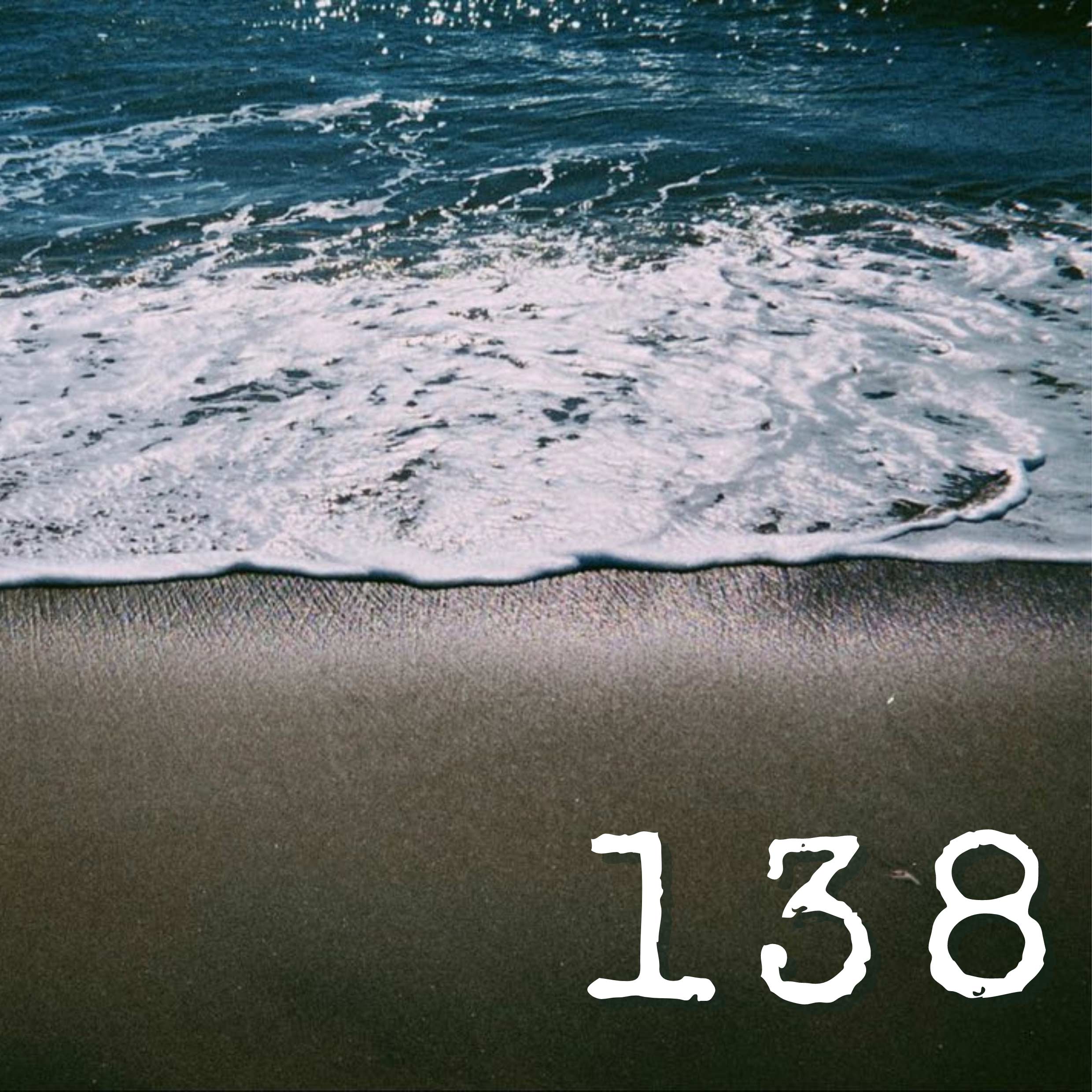

138 is a small collection of lyrics-like texts written during a short stay in Mingan/Ekuanitshit. 138 refers to the road 138 that passes through the Côte-Nord region where the community is located.
- Red Sun
Somewhere along the 138,
I found pieces of myself
buried in the sand of the coast.
Where I can smell the sea,
I am home.
Somewhere along the 138,
I connected the dots,
feeling my head fuller.
But the questions remain.
I am home.
Red sun
I saw you rise
and you saw me rise,
over the ocean,
over the mountain.
Red sun
is calling me home.
Somewhere along the 138,
I felt the strong winds
coming from all directions.
The cold never felt so lovely,
I am home.
I hear the beat of my heart
rushin’
I hear my footsteps
rushin’
I hear the voices:
I am home.
- Cry, boy, cry
Hit the road, boy.
You’ve come a long way,
travellin’ through the rain,
feelin’ like a stray,
but it’s just in your brain.
You never realized
the wind could smell that way.
You never realized
the sky could be so grey.
When you heart is full of sorrow,
and it feels like there’s no tomorrow,
cry, boy, cry.
Come home, boy.
You’ve got things to do.
Healin’ ain’t a straight path.
You know it’ll hurt, you do.
But so does wrath.
Open your eyes, boy.
You need to see;
bein’ from this land
ain’t so easy.
But you know it’s where you’ll end.
Each step along the way,
remember your name.
Each step along the way,
remember your power.
Remember, boy.
- Bittersweet
Berries on my lips,
berries on my mind,
when will I ever get to taste that sweetness?
River on my lips,
river on my mind,
when will I ever get to swim in that water?
In my ears and in my heart,
it all feels so bittersweet.
Something inside of me turned wild,
wild, wild, wild.
Like the flames of the fire I lit.
Like the flames that reach up to the sky.
Sand in my hands,
sand in my pockets,
will I ever step on that beach again?
Rocks in my hands,
rocks in my pockets,
will I ever hold such treasures again?
Was it all just a dream?
Bittersweet
Was it all just a memory?
Bittersweet
The heart can only remember what it knows.
Bittersweet
- Far away (back home)
Monday mornin’
I heard my heart shatter
like a crack of thunder,
knowing that I’ll be leavin’.
Up in the sky,
fly so high,
back to my home
away from home.
Bring me back to the sea,
far away from the city,
back to my home
away from home.
Rocks in my pocket
that I admire.
Warmth of the fire
the smell on my jacket.
Eyes filled with tears,
lettin’ go of my fears.
Whose name do I call for
when I pass the door?
Up in the sky,
fly so high
back to my home
away from home.
Bring me back to the sea,
far away from the city,
back to my home
away from home.
Past, Present, Future
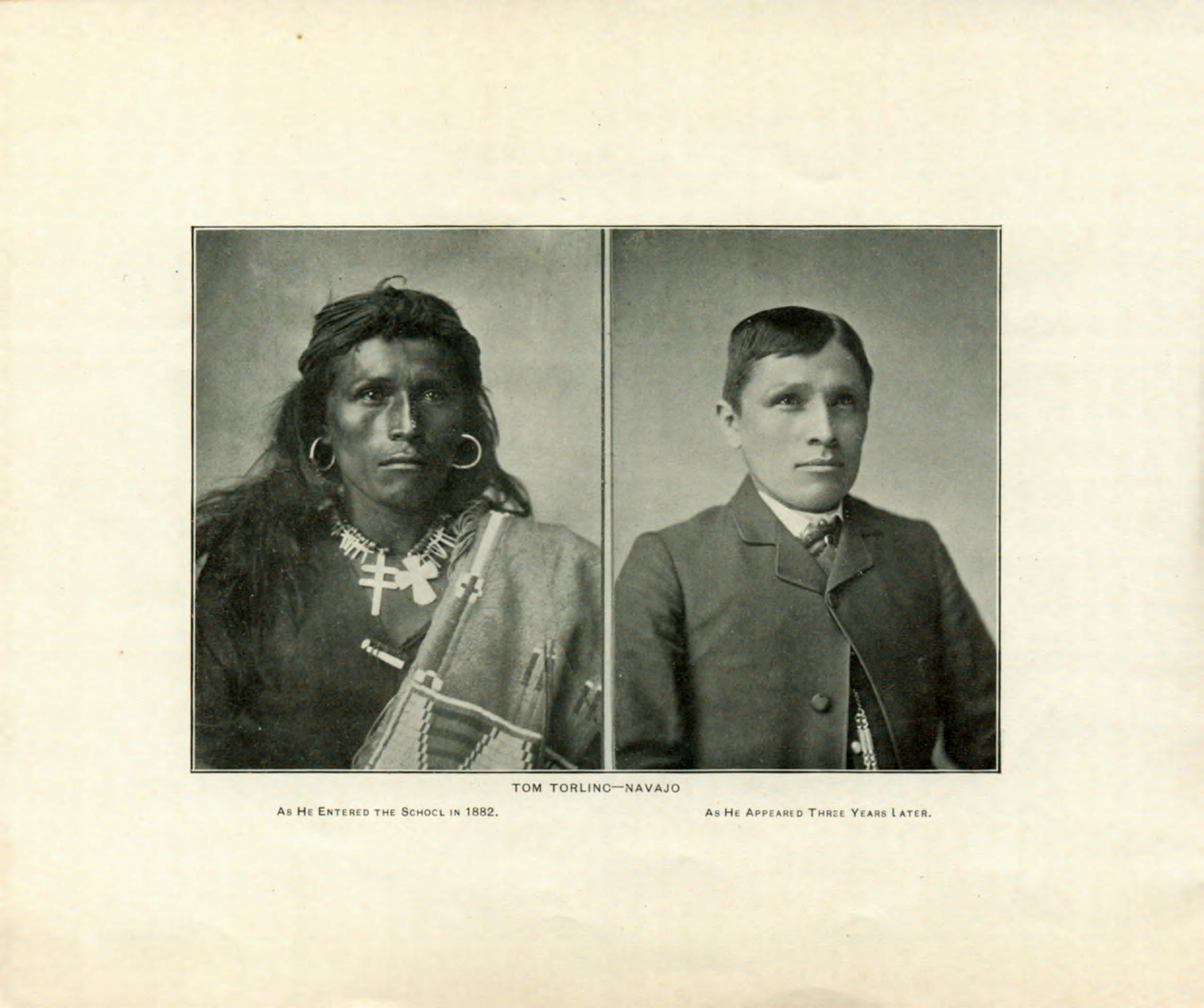
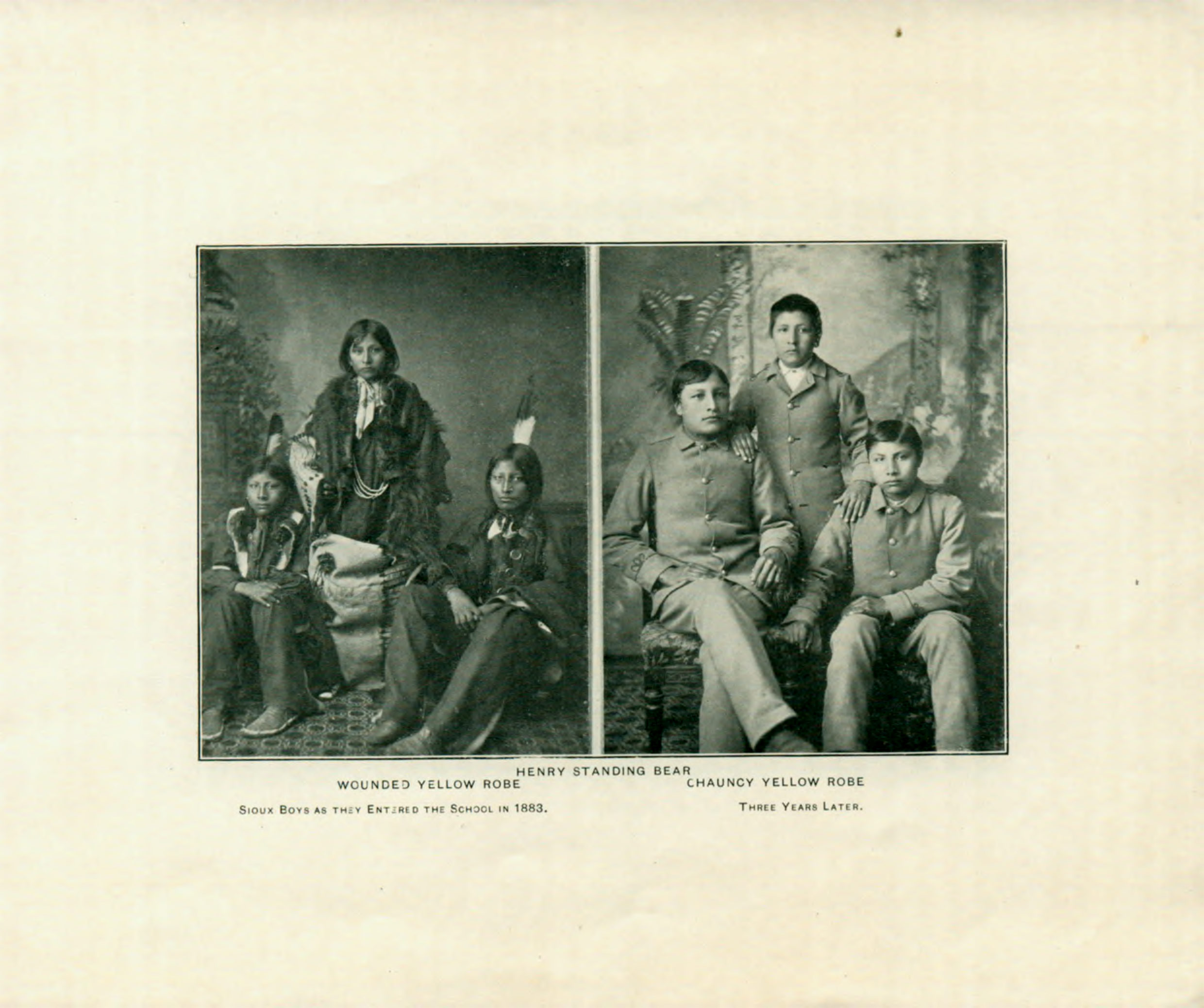
Past is present is future. This is how memory works. It’s how life works. Our ancestors are constantly reminding us that this is how things have always worked.
Waking is a surprise full of wonders. It doesn’t matter if it’s cold or grey out there. Let the wind blow. Let the rain pour. The sun, I’ve learned, shines from within. Every astonished breath is a bonus. Who knew I’d be around long enough to understand?
My parents and their parents and so on grew up being denied a voice in a nation that hailed itself good, peaceful, and fair. Generation after generation of my ancestors had other stories though of betrayal, denial, and violation. They poured hurt and pain into words but also their refusal to meekly accept and forget. They bled their words into letters that they delivered to people with deaf ears. All the ancestors wanted was respect and an end to continuing dispossession and exile behind invisible walls of laws that rendered them cultural refugees in their own lands.
One had to fit the mould, that was the constant demand. Be the made-in-Hollywood Indian. Speak in monosyllabic grunts. Remember that one cowboy bullet equals ten dead Indians. Suffer in silence. Be grateful—ever so grateful. Never complain because look at all the good things we give you. Ignore the holding pens, the theft of your language and children, and more children, and hope. Be good. Or face the consequences?
However, enough children listened and learned at the knee of their parents. There were songs and dances and ceremonies. Be careful, however, and always keep watch. Keep the secret and stay hidden or have these stolen as well. But there was also guilty pleasure ignoring the danger and threat. And sharing laughter at the silliness of it all. Imagine that a song or a dance could possibly threaten their peace, order or good government?
The laughter helped them identify, chuck aside the mixed and confusing messages imposed upon them. Let the Lone Ranger and Tonto entertain but never confuse that with your reality. Some children learned not to be mesmerized by these messages because it could infect their Indigenous soul. Believe instead in lessons and values handed down from ages past for future generations.
Slowly—so slowly many Canadians barely knew it was happening—someone told a story. It was raw and personal. Full of pain, anguish, and despair. Then another someone told another story. More pain, betrayal, and anger. Their wounds ended up on bookshelves for those seeking understanding or maybe a little guilty pleasure. Hard to find, but the story was there if one bothered to look. It could be found way back in the furthest, darkest corner of the bookstore on the bottom shelf.
These stories began to ask fundamental questions. They defined who we were, where we came from, and why we were going this or that way. More importantly, these stories were a mirror to the reader that asked without asking: Who are you? And: What have you done?
The past is present and future. It’s ours to face or forget. That’s how memory and life works. It has always worked this way.
We remember and celebrate our stories, tell them and re-tell them, so that our children and theirs might also learn to laugh like sonasbitches despite all the hell that will doubtlessly confront them as well. We pass on our stories so they may continue to take up the spaces where they have always belonged.
*
The images used in this article are sourced from the Carlisle Indian School Digital Resource Centre. The Carlisle Indian Industrial School is a major site of memory for many Native peoples, as well as a source of study for students and scholars around the globe. This website represents an effort to aid the research process by bringing together, in digital format, a variety of resources that are physically preserved in various locations around the country. Through these resources, we seek to increase knowledge and understanding of the school and its complex legacy, while also facilitating efforts to tell the stories of the many thousands of students who were sent there.
